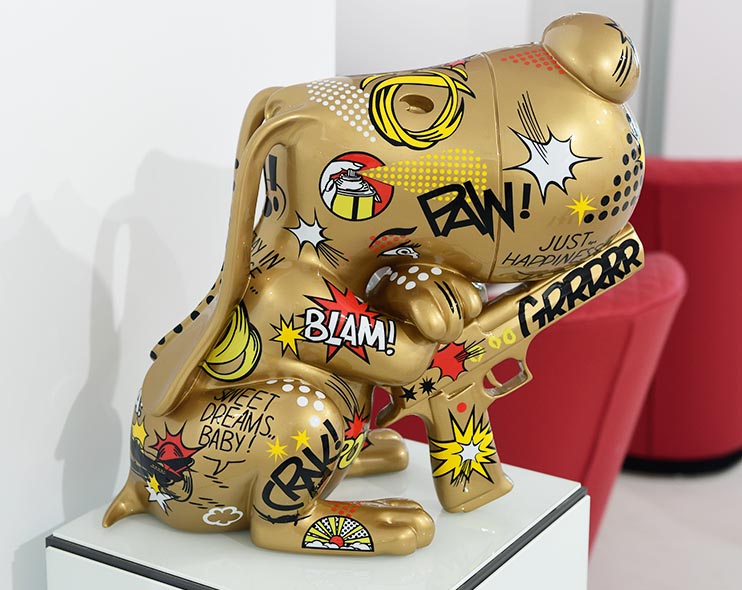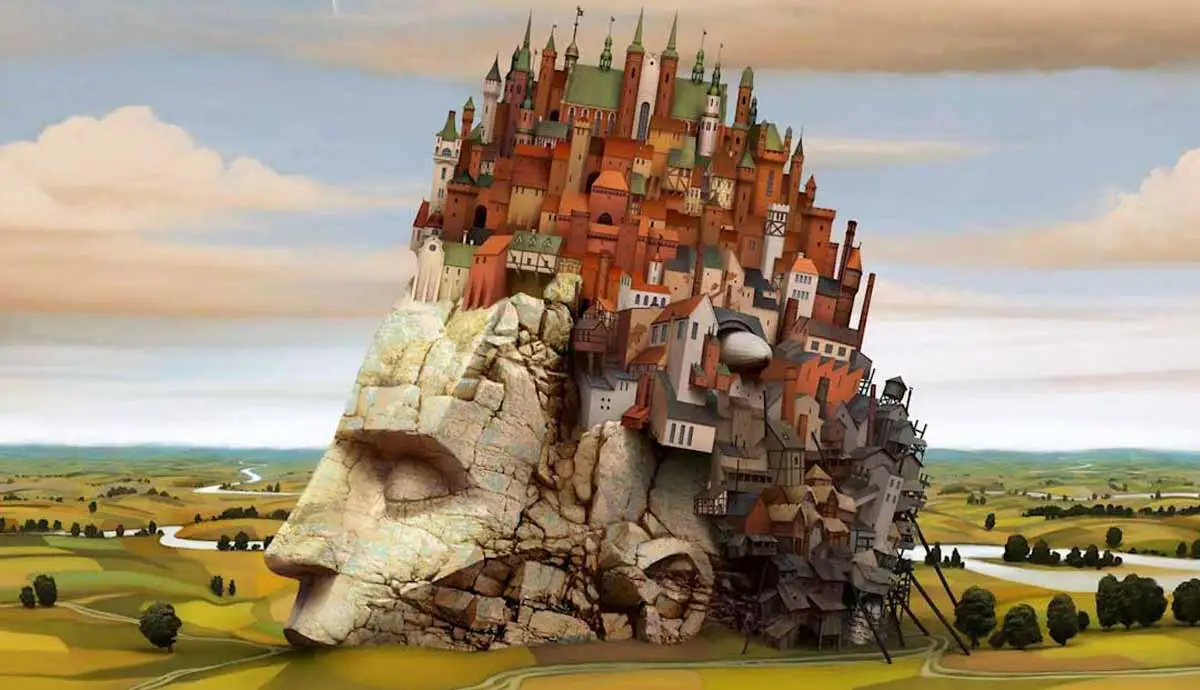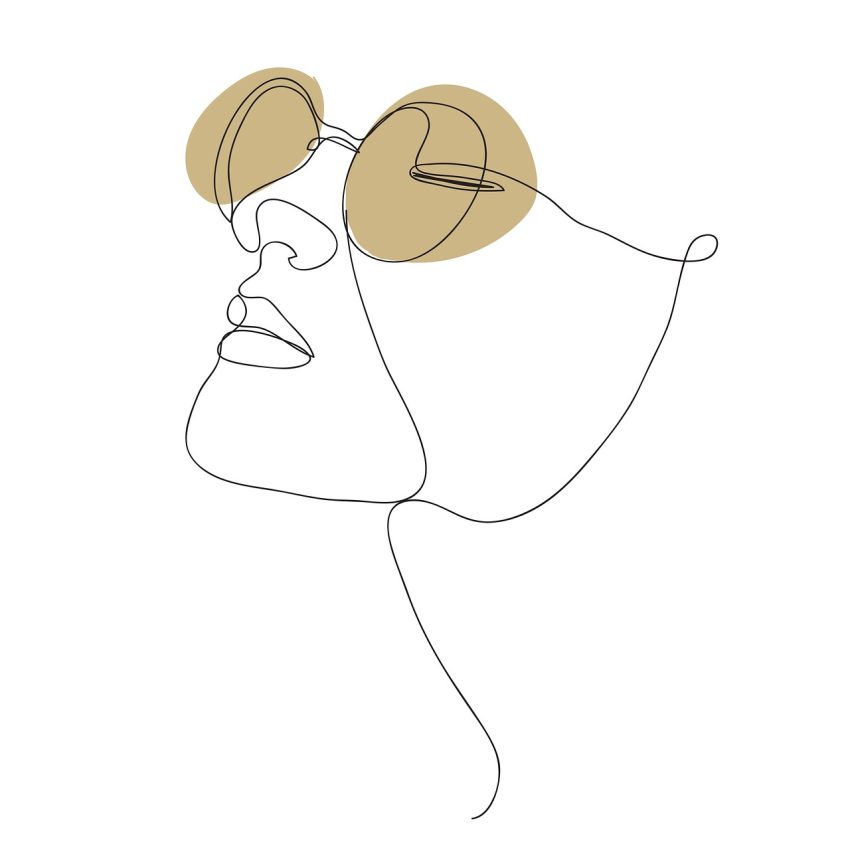Exploring Postmodern Art Movement: A Comprehensive Guide to Postmodernism in Contemporary Art
Introduction to Postmodernism
Terms and concepts of postmodern art
Postmodernism emerged as a reaction against modernism, challenging its rigid definitions and singular notions of progress.
Instead of adhering to a single style or definition, postmodernism celebrates diversity and rejects the authority of any one artistic style.
It blurs the boundaries between high art and popular culture, recognising the interplay between art and everyday life.
In this multifaceted approach to art making, postmodernism encompasses various forms of art, including video art, representational art, and installation art.
During the 1950s and 1960s, movements such as pop art and minimalism emerged, reshaping the landscape of Western art.
Figures like Jasper Johns and Allan Kaprow played pivotal roles in challenging traditional artistic norms and expanding the definition of art.
This period marked a phase of postmodernism, characterized by a theme of experimentation and a rejection of established conventions.
The definition of postmodernism is inherently complex, reflecting the diverse range of styles and ideas encompassed by the movement.
Postmodernism became described as a postmodern condition, wherein the boundaries between high culture and mass or popular culture are blurred, and distinctions between art and architecture are challenged.
Artists like John Cage and Donald Judd pushed the boundaries of what art could be, exploring new forms and concepts that defied traditional categorizations.
In the contemporary art world, postmodernism continues to influence artistic practices and shape artistic projects.
Figures like Charles Saatchi have championed works of postmodern art, recognising the importance of diversity and innovation in the artistic landscape.
Scholars like Charles Jencks have sought to define and analyse the characteristics of postmodernism, highlighting its impact on art and related fields.
Overall, postmodernism represents a dynamic and multifaceted artistic movement that defies easy categorization, embracing the complexities of the postmodern condition.

Jacques Lacan
Jacques Lacan (1901–1981) stands as a significant figure in the realms of French psychoanalysis and theory.
His ideas reverberated throughout critical theory in the twentieth century, notably shaping post-structuralist philosophy and the trajectory of postmodernism.
Lacan undertook a reevaluation of Sigmund Freud’s psychiatry, infusing it with contemporary intellectual significance.
He challenged conventional boundaries between the rational and irrational by positing that the unconscious, far from being primitive, possesses a complexity and sophistication akin to consciousness.
Lacan proposed a framework wherein the unconscious operates like a language, facilitating a dialogue between the conscious and unconscious realms, thereby shaping our experience of the world.
Historical Context: From Modernism to Postmodernism
Coined around 1970, the term “postmodernism” presents a challenge in defining it as a singular art movement due to its diverse nature.
There isn’t a definitive postmodern style or theory serving as its cornerstone.
Instead, postmodernism encompasses various artistic approaches, beginning perhaps with the emergence of pop art in the 1960s.
It encompasses a wide spectrum of artistic expressions, including conceptual art, neo-expressionism, feminist art, and the emergence of the Young British Artists in the 1990s, showcasing the diversity of new art.
Postmodernism, as a cultural movement, emerged in the mid-20th century as a response to the dominance of modernist traditions that had been prevalent in art and literature.
While modernism focused on ideals of progress, rationality, and universal truths, postmodernism sought to deconstruct these notions and challenge the established norms.
Artists began to reject the linear narratives and grand narratives of modernism in favor of fragmentation, pastiche, and irony.
One significant aspect of postmodernism is its self-awareness regarding its place within history and tradition, epitomising the reflective nature of postmodernist art.
Postmodern artists often reference and reinterpret works from various art movements, including modernism itself.
By blurring the boundaries between high culture and popular culture, postmodern art questions hierarchies and challenges distinctions between what is considered “art” and what is not.
This interplay with tradition serves as a critique of societal norms while also celebrating diversity and multiplicity in artistic expression.
vs Modern Art
Postmodernism emerged as a response to modernism, which was rooted in idealism and a hopeful vision of progress for humanity.
Modernist ideals were based on the belief in universal truths, often drawn from religion or science, to comprehend reality.
Modernist artists focused on experimentation with form, technique, and processes, prioritizing the reflection of the modern world over specific subjects.
In contrast, postmodernism arose from skepticism and a distrust of absolute reason.
It contested the idea of universal certainties or truths.
Drawing from mid to late twentieth-century philosophy, postmodern art emphasized the significance of individual experiences and interpretations over abstract principles.
While modernists sought clarity and simplicity, postmodernism embraced the complexity and often contradictory layers of meaning inherent in human existence.

Influential Artists: Highlighting key figures in postmodern art such as Cindy Sherman, Jean-Michel Basquiat, Barbara Kruger.

Postmodern art emerged as a revolutionary movement that challenged traditional artistic norms, and few artists embody this defiance as powerfully as Cindy Sherman.
Through her groundbreaking series of self-portraits, Sherman deconstructs societal constructs of femininity and identity, blurring the lines between reality and fiction, an exploration found in postmodern culture.
Her playful yet thought-provoking approach to photography invites viewers to question the authenticity of images in an age dominated by media manipulation.
Meanwhile, Jean-Michel Basquiat’s graffiti-influenced paintings transcend traditional boundaries between street art and high culture.
His raw energy and eclectic mix of symbols challenge viewers to navigate complex narratives through abstract forms.
Basquiat’s work serves as a powerful commentary on race, class, and power dynamics in society, inspiring a new wave of artistic expression that remains influential today.
Barbara Kruger’s bold text-based artworks confront issues of consumerism, feminism, and identity with striking simplicity.
By combining provocative slogans with mass media images, Kruger challenges viewers to reconsider their assumptions about gender roles and social norms, a method deeply rooted in postmodern culture.
Her iconic style has left an indelible mark on contemporary visual culture, signaling a shift towards art that is both visually impactful and intellectually stimulating.
Damien Hirst
Damien Hirst, a leading figure of the Young British Artists movement, epitomizes postmodernism through his provocative artworks.
His use of controversial materials, exploration of life and death themes, and challenges to traditional artistic norms align with postmodern critiques of societal values.
Hirst’s delegation of art production blurs the lines between authorship and collaboration, while his engagement with the commercial art market reflects postmodern concerns with consumerism.
Overall, Hirst’s work embodies key aspects of postmodern art, securing his place within its landscape.

Pop Art and Its Influence on Postmodernism
Andy Warhol, Roy Lichtenstein & Claes Oldenburg
Pop Art emerged in the 1950s and reached its zenith in the 1960s, challenging traditional notions of fine art by incorporating imagery from popular culture and mass media into artworks.
Artists like Andy Warhol, Roy Lichtenstein, and Claes Oldenburg appropriated images from advertising, consumer products, and popular media, transforming them into vibrant and often ironic statements about contemporary society.
This movement had a profound impact on the development of postmodernism, as it shattered the boundaries between high and low culture and questioned the notion of originality in art.
Postmodern artists, inspired by Pop Art’s boldness and irreverence, continued to explore themes of consumer culture, media saturation, and the blurring of reality and representation.
Pop Art’s influence on postmodernism can be seen in the use of appropriation, irony, and pastiche, as well as in the elevation of popular culture as a legitimate subject for artistic exploration.
Postmodernism and Performance Art
Carolee Schneemann & Marina Abramović
Postmodernism reshaped the landscape of performance art, infusing it with a new sense of experimentation and conceptual depth, leading to innovative works of art.
Emerging in the latter half of the 20th century, postmodern performance art shattered traditional boundaries, embracing a wide array of mediums, including live performance, video, installation, and multimedia works.
Artists like Carolee Schneemann and Marina Abramović challenged established norms, using their bodies as the primary medium to explore themes of identity, gender, and power dynamics.
Postmodern performance art also blurred the lines between art and life, often incorporating elements of everyday experience and audience participation.
Through their radical approaches, postmodern performance artists pushed the boundaries of what constituted art, sparking critical dialogue and redefining the relationship between artist, audience, and artwork.

Conceptual Art & The Young British Artists

Postmodernism profoundly influenced Conceptual Art and the emergence of the Young British Artists (YBAs), reshaping the trajectory of contemporary art in the late 20th century. Conceptual Art, which gained prominence in the 1960s and 1970s, prioritised ideas and concepts over traditional aesthetic concerns, challenging the notion of art as an object to be admired.
Artists like Sol LeWitt and Joseph Kosuth embraced this approach, creating artworks that often consisted of instructions or written descriptions rather than physical objects, turning conceptual frameworks into art objects.
This rejection of materiality and emphasis on the conceptual aligns closely with postmodernism’s skepticism towards traditional artistic conventions.
Similarly, the Young British Artists, a group of artists who rose to prominence in the late 1980s and early 1990s, embraced postmodern themes and strategies in their work.
Led by figures like Damien Hirst and Tracey Emin, the YBAs employed provocative and often controversial techniques, blurring the boundaries between art and life, and challenging established norms of artistic production and consumption.
Both Conceptual Art and the Young British Artists exemplify how postmodernism encouraged artists to rethink the nature of art and its relationship to society, paving the way for innovative and boundary-pushing artistic practices.
Feminist Art
Judy Chicago, Cindy Sherman, and Barbara Kruger
Feminist Art emerged as a significant movement within postmodernism, challenging traditional patriarchal structures and norms prevalent in the art world.
Rooted in the 1960s and 1970s, feminist artists sought to address issues of gender inequality, representation, and the exclusion of women from mainstream artistic discourse.
Artists such as Judy Chicago, Cindy Sherman, and Barbara Kruger utilised various mediums and techniques to critique societal constructs of femininity, while also reclaiming female identity and agency in art.
Postmodernism provided a fertile ground for feminist artists to deconstruct and challenge existing power dynamics, embracing the diverse voices and experiences of women.
Moreover, feminist art’s emphasis on subjectivity, plurality, and the intersectionality of gender with race, class, and sexuality resonated deeply with postmodernism’s rejection of universal truths and embrace of diverse perspectives.
In essence, feminist art not only contributed to the broader discourse of postmodernism but also enriched it by offering a critical lens through which to examine social and cultural hierarchies.


Pluralism

Pluralism in the postmodern era went beyond mere reproduction and collective authorship experiments.
It coincided with the emergence of movements such as Feminism, Civil Rights, Queer theory, LGBT rights advocacy, and postcolonial theory, prompting a demand for a more inclusive approach to art.
Artists like Kara Walker and Felix Gonzalez-Torres began tackling subjects from various viewpoints, leading to a richer representation of diverse, multicultural identities and a playful exploration of identity and self.
This thematic exploration was notably visible in the early works of Barbara Kruger and Cindy Sherman.
Sherman, in particular, focused on the dissonance between identities constructed through media and lived experiences, aiming to highlight the fluidity—or “polysemic” nature—of images.
By doing so, Sherman’s art resisted the dominant narratives of art history and challenged the authority traditionally vested in the artist.
Themes and Techniques
DISCUSSING COMMON THEMES (DECONSTRUCTION, PASTICHE) AND TECHNIQUES (APPROPRIATION, BRICOLAGE) USED IN POSTMODERN ARTWORKS
Postmodern art is a realm where traditional boundaries are blurred, and new forms emerge.
Themes like deconstruction and pastiche play a vital role in giving depth to artworks by questioning established norms and blending diverse elements.
Deconstruction involves breaking down conventional ideas to reveal underlying contradictions and complexities, inviting viewers to reconsider their preconceived notions.
Pastiche, on the other hand, involves the imitation of various styles and techniques from different periods, creating a collage-like effect that challenges the idea of originality.
Techniques such as appropriation and bricolage further enrich postmodern artworks by incorporating existing images or objects into new contexts.
Appropriation involves borrowing elements from popular culture or art history to create layers of meaning that reflect contemporary society’s fragmented nature, effectively blending art and popular culture.
Bricolage emphasizes the use of found materials or ready-made objects in unconventional ways, highlighting the interplay between high and low culture while celebrating randomness and chance encounters.
By embracing these themes and techniques, postmodern artists invite viewers to engage with complex narratives that defy simplistic categorizations.
High and Low Culture
The term “high culture” traditionally refers to established fine arts like painting and sculpture, often associated with notions of class, quality, and authenticity by art critics.
It serves to distinguish these art forms from the mass-produced commodities and entertainment prevalent in “low” or popular culture, such as magazines, television, and pulp fiction, which gained prominence during America’s post-war consumerist boom.
In his seminal 1939 essay ‘Avant-Garde and Kitsch,’ Clement Greenberg cautioned the modernist avant-garde against aligning with what he deemed as philistine expressions.
Greenberg advocated for artists to focus on an art capable of societal transformation.
However, postmodernists diverged from this stance, embracing popular culture unabashedly and integrating it into their work.
Pop artists like Claes Oldenburg and Andy Warhol transformed mundane consumer objects into oversized soft sculptures or cultural icons, infusing them with humor and irony.
Meanwhile, Minimalists employed industrial materials to create repetitive forms reminiscent of assembly lines.
This embrace of the “popular” as both subject and medium expanded the boundaries of art while offering incisive social commentary.
Commercialism became embraced, and this focus on “low” culture not only challenged conventional definitions of art but also served as a potent tool for societal critique.


Spectacle and Image


The rise of consumerism and the omnipresence of television ushered in an era where advertising and mass media held unprecedented sway, significantly impacting modernist art.
A pivotal moment occurred in 1968 when American households were confronted with unfiltered footage of the Vietnam War, juxtaposing the comfort of their daily lives with the stark realities of conflict.
This blurring of lines between reality and fiction, exacerbated by the pervasive influence of advertising, gave rise to what French philosopher Jean Baudrillard termed “hyperreality.” In this state, postmodern existence resembled a flickering TV screen—volatile, fragmented, and devoid of inherent truth.
These concepts inspired artists like Barbara Kruger, who shifted their focus to the surface rather than the pursuit of deeper truths.
Emphasising style and spectacle over substance became a hallmark of Kruger’s work, as seen in pieces like “I Shop therefore I Am” (1987), echoing the ethos of Pop art.
Concurrently, a camp aesthetic emerged, drawing from historical styles such as Gothic and Baroque, characterized by its flamboyance and shock value.
This penchant for the dazzling and extravagant finds expression in the work of artists like Jeff Koons, epitomizing a key facet of postmodern art.
Blurring Aesthetic Codes
Modernism arose in 19th-century France as a rebellion against the French Academy’s focus on historical and figurative art.
Avant-garde movements sought unmediated visual expression, culminating in Abstract Expressionism’s non-representational painting, a hallmark of modernist art. However, this led to a perceived staleness in painting.
Postmodernism revitalized interest in past styles, like painting, without concern for coherence.
Gerhard Richter’s parody and pastiche disrupted meaning, while architecture, such as The Sainsbury Wing, blended historical features into visual spectacles.
Quentin Tarantino’s “Pulp Fiction” defied narrative conventions, drawing from various genres.
The era saw a convergence of artistic disciplines, challenging traditional categories, and embracing installation art.
The mantra of “anything goes” blurred distinctions of taste and value, as artists used diverse media, including advertising, to convey messages.

Impact on Contemporary Art: Examining how postmodern ideas continue to influence artistic practices today.
In contemporary art, the influence of postmodern ideas remains palpable, shaping the very fabric of artistic expression.
This is evident in the constant reevaluation and questioning of traditional boundaries in mediums, styles, and narratives.
Artists today continue to challenge grand narratives by embracing fragmentation, pastiche, and deconstruction as key aesthetic strategies.
Furthermore, postmodernism’s emphasis on intertextuality and hybridity has catalyzed a shift towards interdisciplinary practices in art.
Collaborations between artists from different disciplines such as visual arts, music, technology, and performance have become increasingly common.
This blurring of boundaries not only reflects the interconnected nature of our world today but also underscores how postmodern ideals resonate with contemporary concerns and creative approaches.
The post-postmodernist era



The notion of a “post-postmodernist” era has gained traction in recent discourse, with some arguing that postmodernism has become outdated.
Critics question the merit of a movement characterized by superficiality, cynicism, and nihilism.
Some advocate for a return to modernist principles, albeit in modified forms. Edward Docx labels this period the “Age of Authenticity,” emphasising a resurgence of genuine expression and craftsmanship over mere style and concept.
Other terms like “alter modernism” by Nicolas Bourriaud and “pseudo-modernism” coined by Alan Kirby capture facets of today’s culture marked by incessant communication and globalisation, alongside a shift towards trivial participation, exemplified by reality TV.
While these assertions vary widely and lack consensus, they collectively critique postmodernism’s dominance, longing for a renewed emphasis on truth and authenticity.
In various ways, they challenge postmodernism’s status as a prevailing worldview, relegating it to a single phase in a broader historical continuum, now possibly in decline.
Furthermore, postmodernism’s emphasis on intertextuality and hybridity has catalyzed a shift towards interdisciplinary practices in art.
Collaborations between artists from different disciplines such as visual arts, music, technology, and performance have become increasingly common.
This blurring of boundaries not only reflects the interconnected nature of our world today but also underscores how postmodern ideals resonate with contemporary concerns and creative approaches.
Criticisms of Postmodernity: Addressing debates surrounding the authenticity and value of postmodern artworks.
One of the primary critiques of postmodern art is its perceived lack of authenticity and depth.
Some argue that the emphasis on irony, pastiche, and deconstruction in postmodern artworks results in a superficial and meaningless aesthetic.
Critics contend that the constant borrowing and remixing of styles from the past dilutes the originality and significance of artistic expression.
Another common criticism revolves around the value placed on postmodern artworks within the art market and institutional settings.
Detractors claim that postmodern works are often seen as mere commodities or investments, leading to a focus on shock value or novelty rather than artistic integrity, yet this critique itself fuels the conversation on the value of postmodernist art.
This commercialization of postmodern art has raised questions about its true cultural impact and long-term relevance in shaping our societal discourse.


Conclusion: Summarizing the significance of understanding postmodernity in appreciating contemporary art trends.
In navigating the vast realm of contemporary art, it becomes evident that postmodernism has indelibly shaped the landscape of artistic expression.
Emerging as a reaction against modernism’s rigidity, postmodernism defies singular definitions or styles, encompassing a diverse array of movements and approaches.
From performance art to installation art, from high art to popular culture, postmodernism blurs boundaries and challenges established norms within the art world.
Influential figures such as Carolee Schneemann, Barbara Kruger, and Claes Oldenburg have paved the way for new art forms and redefined the very essence of what art can be.
Postmodern culture thrives on the fusion of high and low art, weaving together elements of fine art with those of everyday life, inviting viewers to reconsider their preconceptions of art and its place in society.
As we reflect on the evolution of art history, from the precursors to postmodernism to its current phase, it becomes clear that postmodernism’s legacy transcends any single style or theory.
It is a cultural movement that celebrates diversity, challenges hierarchies, and embraces the ever-changing landscape of artistic expression.








